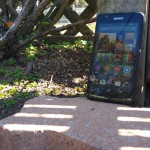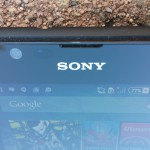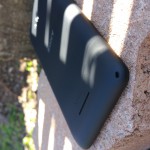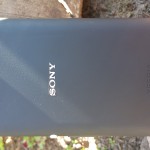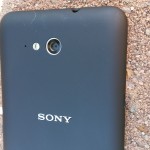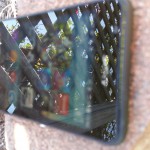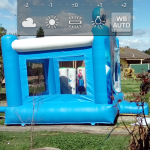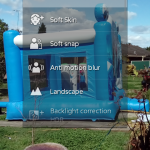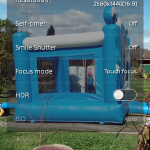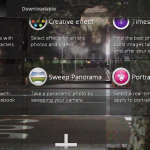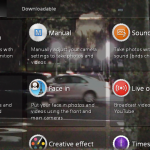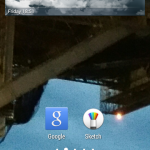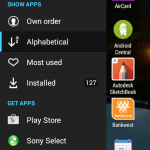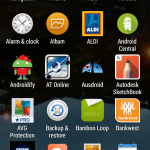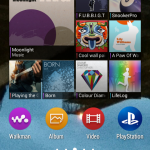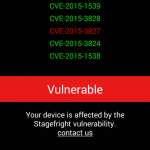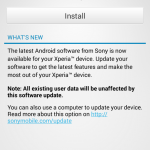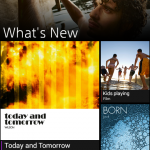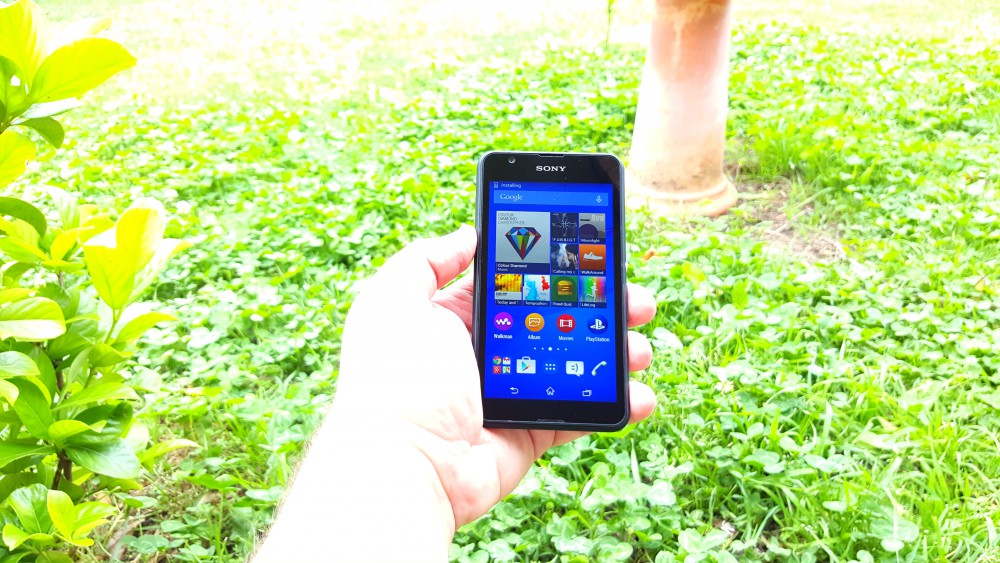
Sony’s Xperia E4 was announce earlier this year, and it showed off a new design which Sony referred to as a ‘curved, OmniBalance design’. Basically, more rounded, more curvy. Neat.
The Xperia E4 would come in two variants, one supporting 3G (HSPA) only, and one supporting 4G as well. With Australian telcos all pushing their 4G networks, it’s little surprise that the model we see here in Australia is the 4G variant, which is curiously named the Xperia E4g.
With a new design, which is quite visually pleasing and it is certainly a new look for the company’s mid-range phones, we wanted to see how this phone would go as a day to day phone with heavy usage.
Let’s find out.
- Stamina mode which gives up to 2 days charge
- Design is very different and really interesting — it brings some of Sony’s flair to what can be a fairly bland prepaid cadre
- Camera focus & shutter delay can result in blurry photos
- Rear audio speaker phone is something that will disappoint
Design and Hardware
The Xperia E4g is made of a plastic, rounded back which has that a textured plastic rear cover. This rear texture has a nice feel to it, although most would say it makes the phone feel cheap, it is something different to just an all out polished plastic design which is normally found on such low end devices. The addition of this material is very much a welcomed change at least to help differentiate the phone from the rest.
Going to the front of the phone, the Xperia E4g comes with a 4.7” IPS display which I will go into further detail in the next section. There is also a 2MP front facing camera which is found on the right hand side just next to the phone’s earpiece.
The power button is located on the right hand side in the middle of the phone, and just slightly below the power button we can find the volume rocker. Looking at the rear of the phone, we find the speaker towards the bottom with the Sony logo in the middle and the centre mounted camera at the top
Located on the left side of the E4g, towards almost the middle of the left hand side is the MicroUSB port.
The design is certainly something different and actually what makes me like the Xperia E4g, very much so. This kind of design could be well applied to future low to mid range mobiles from Sony, at least that could be a hopeful wish.
Internally, the Xperia E4g has a 1.5 GHz Quad Core MediaTek MT6732 processor with 1GB RAM. There is also 8GB flash storage, which can be expanded to 32GB via microSD which is all powered by Android 4.4.4 KitKat. So all up it’s not a bad rundown of specs for a entry level mobile phone.
Display
The Xperia E4g comes with a 4.7″ qHD (540×960) resolution IPS display with a fairly low pixel density of 234ppi. Honestly it isn’t anything special and certainly is at the low end. With this low resolution, text appears a little pixelated, and this means when you’re reading text you may need to zoom a little to be able to see text more clearly.
The IPS display is very bright and spot on when it comes to the colour representation. In the daylight, the screen was able to be viewed without to much distraction or at least without glare interference. Using the phone inside is also not an issue given the brightness of the display.
Covering the display is a scratch-resistant glass, though it’s not Gorilla Glass. Personally I would have thought going with Gorilla Glass would have been a more appropriate choice but this could have been discounted in favour of Sony’s own cheaper scratch-resistant glass instead. Still, I do believe that going with a more trusted product like Gorilla Glass would have been a better option.
This is always a welcome addition that has become a standard thing with virtually all phones today.
Camera
Sony is one of the leading manufacturers of camera lenses and camera technology in the mobile phone business; in fact, Sony manufactures the sensors that power cameras included in almost all the top end phones.
Sony has utilised this technological prowess with the Xperia E4g, offering a 5MP rear camera providing some decent pictures. The E4g comes with a rear LED flash (sadly it’s not dual-tone) which is something you will have to use as soon as the sun goes down due to the lack of Optical Image Stabilisation (OIS) in the camera hardware.
The Xperia E4g can capture HDR pictures along with 1080p video recording – something which is becoming fairly standard on the mid-range phone market, and a very welcome addition to phones in this price bracket.
On the front of the Xperia E4g is a 2MP camera which can capture 720p video recording along with at least providing a decent selfie shot.
The camera’s UI software is pretty easy to use, with the options that are easily accessible. I like the ease of the different modes without further hassles of trying to work out where these different modes are located. There’s a few different modes in the E4g software, though as usual most users will just use the E4g’s auto default Intelligent settings – the Sony equivalent of ‘Auto’ mode – which does produce some decent pictures.
There are some inconsistencies when using Auto mode or night mode, though. I found that once I uploaded pictures onto my computer, I noticed that pictures can come out with some unnatural colours, with intensified and much warmer tones like red and yellow.
Using the camera indoors can be one of the phone’s achilles heel, where the the light start to dim down a bit which can and does result in soft, smudgy photos with background noise. These grainy photos progressively become more of an issue in lower light levels thanks to the lack of OIS, which is expensive and was most likely not included due to price limitations. The situation doesn’t get any better with the usage of the LED flashlight causing overly bright and over-saturated images which cause further grainy noise to enter the photos.
One other issue with the camera is the ability to focus and shoot at the same time. Focusing on certain items in screen can cause the camera to take its time to focus accurately. If you take a shot before the focus software has had a chance to fully adjust and focus your picture, this can lead to blurry and at best distorted images.
There is also a delay of between 4-8 seconds from the cameras post processing of your snaps which can certainly become frustrating should you wish to instantly snap a picture without the need to wait, and as such, there’s no burst mode on the E4g.
Connectivity
The Xperia E4g comes with the usual suspects when it comes to WiFi connectivity, having Dual-Band WiFi connectivity (802.11 a/b/g/n) which ensures connection between the Xperia E4g and my home WiFi — which is in the centre of my house — is strong and never misses a skip. There is also WiFi direct and the ability to make the E4g into a mobile hotspot.
There is no Miracast availability on the Xperia E4g which is little disappointing, but it does keep on track with most prepaid phone not offering this service. It’s not something many people seem to use.
The E4g comes with Bluetooth version 4.1 which ensured that my Asus Zenwatch could be connected to the E4g without excessive drainage of battery power for both smartwatch and mobile phone.
Of course the E4g is a phone first and foremost, and you can use it on all the 3G/2G networks to make calls with ease. It’s not likely that the phone will work with Telstra’s VoLTE offering, but on a prepaid, this really is to be expected. The phone is locked to the Telstra network, as it is a pre-paid device. You can unlock it if you’re willing to pay a small fee, though.
Telstra’s 4GX network which aggregates their Band 28 (700MHz) and Band 3 (1800MHz) frequencies isn’t present on this handset, but the E4g does have the ability to use the lower frequency Band 28 network making for great reception inside buildings – a benefit of the lower frequency LTE band.
Performance
Powering the Xperia E4g is a 1.5 GHz Quad Core MediaTek MT6732 processor, which when partnered with the 1 GB RAM, certainly has been able to handle most tasks with ease.
The use of a Mediatek processor is somewhat a step out of the ordinary for Sony, with Qualcomm processors more the norm. The 1.5 GHz Quad Core MediaTek MT6732 processor / 1GB RAM combo works surprisingly well on the E4g though, ensuring the phone can handle just about anything I threw at it.
Activities such as games or apps running were smooth and even streaming video such as Netflix or Stan ran with almost no issues. I did find there were time where the software seemed to have a few hiccups and a couple of time where it did freeze – a restart fixed those issues.
Intensive apps like Asphalt 8 or Real Racer can stutter and don’t generally look or feel as smooth when playing on higher end devices however you can still play these games without too much frustration.
This is quite an achievement for a lower end device.
Sound
The Xperia E4g comes with Sony 3D Surround Sound technology (VPT). The E4g attempts to emulate the immersive sound you get on a home theatre when you plug headphones in – sadly, the supplied headset is nowhere near up to the task.
VPT is best used when watching a movie or TV Show from Google Play and I have to say the sound was similar in experience at least to my home surround sound system, provided you use a decent set of headphones of course.
Sony have also thrown in its xLoud Experience which is similar to the infamous ‘Beats Audio’ software found on earlier model Android handsets before their eventual acquisition by Apple. The xLoud Experience allows for a more clear, richer sound when listening to music and/or YouTube videos. Again this type of technology is generally only seen on high end devices from Sony and to have it brought onto the Xperia E4g is fantastic.
Battery
The Xperia E4g comes with a 2,300mAh Battery which is a good size for a low-end, entry-level phone. Sadly though, the battery is non removable, so should your battery need replacement, you can’t just grab a spare from the shop.
This said the E4g also includes Sony’s Stamina Mode which the company claims can provide at least 2 days battery life from a single charge.
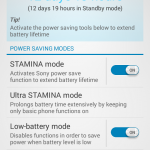
Percentage wise, I did find the Xperia E4g can still have about 45-50% battery life towards the end of the day if I utilised just stamina mode. I could still use the E4g throughout the day without putting it on charge until I came home late at night. Of course there is also a setting for ultra stamina mode which can extend the battery life to up to 14 days from full charge by letting only basic functions operate on the phone such as: phone, contacts, messaging, camera, album, calendar, alarms and clocks, calculator, FM radio and settings only.
The battery and the inclusion of Sony’s Stamina Mode is certainly one of the main selling points for the Xperia E4g. However, as manufacturers start to realise that not everyone can afford high end or even mid level phones, they are slowly beginning to add feature like Stamina mode to their low end prepaid devices and it’s good to see Sony bring this technology to its Xperia E4g phone.
Software
The Xperia E4g comes with Android 4.4.4 (Kit Kat), with of course some Sony modifications made to the launcher to give it that uniquely ‘Sony’ feel. The tweaks are fairly minor and if you haven’t used a Sony handset previously you’ll be well pleased for the most part as it’s mostly a stock Android experience.
The one sticking point, at a point in time when Android 6.0 is being released, is that Sony hasn’t made the effort to deliver the E4g with at least a minimum of Android 5.1 out of the box.
Sony has a pretty good track record updating their higher end mobile offerings, however their lower end devices tend to sit on their launch software for either an indefinite or at least an extended period. That said, Telstra has an update in their system to resolve the Stagefright issues – but beyond that, there is no indication of a platform update to Lollipop, and there’s not likely to be.
Android updates are always worth discussing when looking at a new phone, so this might be worth consideration in your buying process.
Storage
The E4g has a surprising lack of storage, with the spec sheet listing just 8GB of on-board storage, of which you’ll find just 5GB available for storing pictures, movies and more. This really isn’t much storage, and you would most certainly need to take advantage of the expandable memory option on the E4g which allows you to add up to 32GB of space via MicroSD.
The addition of memory through the MicroSD Card slot means you can now load your games from Google Play along with music and movies onto it as well. If you’re going to use the Xperia E4g for much beyond just making calls and text, you’d be well advised to look at extra storage — its cheap nowadays anyway.
Bundled Apps
The Xperia E4g comes with a suite of Sony’s own apps which sit alongside some of Google’s own apps when first setting up the phone for the first time.
The full list of Sony’s own apps available include: Album, AR Effect, AVG Protection, File Commander, Music, News from Socialife, OfficeSuite, Music, Play Station, Sketch, Smart Connect, Sony Select, Xperia Care Support, TrackID, TrackID TV, Xperia Update Centre, What’s New, Video, Phone, Messaging, FM Radio, Email, Contacts and Xperia Lounge.
There were two apps which captured my attention, the first was AR Effect, which enables you you take a picture of yourself or friends with Augmented Reality (AR) effects being placed into your snap, such as adding a dinosaur in the background or Mickey Mouse AR Effects into your photos. Of course, there are more effects that can be added and downloaded via Google Play (of course at an additional cost) but it is something to have some fun with. This app can be a little tricky to use and I did find it frustrating to operate, but when you can get it to work, it’s absolutely fun to use.
The second app was Sketch, which as the name suggestions is like a drawing app similar to what Scribble is for HTC and Note or drawing apps that are found on the Galaxy Note series phones. This app, unlike AR Effect, was much easier to use and again was fun. It’s useful too — if you take a photo, or a screenshot, and need to annotate it, Sketch is the easiest way to do it.
Both these apps I can clearly say would be enjoyable for younger users, but I love these types of fun apps too.
Sony Xperia E4g
- 2G: 850/900/1800/1900 MHz
- 3G: Bands 1,2,4,5,8
- 4G: Bands 1,2,3,4,5,7,8,28
The Xperia E4g certainly is a different type of mobile phone design wise, and stood above its lower end price in terms of being a pleasure to hold and use.
The design for me is what makes this an attractive phone to consider using. It certainly is something which I would like to see Sony continue to do with its low-to-mid level mobile phones.
The other standout is Sony’s Stamina mode which certainly does excel and does as it promises, providing up to 2 days worth of charge. This type of technology has previously been limited to the company’s higher end mobile phones, and with battery life a keen focus on mobile technology these days, it’s good to see Sony bring this technology to their lower end phones.
As a leader in mobile photography sensors, I would like to see Sony hone in on the camera software issues, specifically the focus and shutter issues. Without adding cost, I am sure the company could tweak the camera software and technology to get a really clear, fast and vibrant picture – something that would set them apart at the lower end of the market.
The Xperia E4g is certainly a phone worth consideration for anyone who wants a reliable and sturdy first Android device that isn’t going to break the bank.
Would I purchase the Xperia E4g? Most likely not for my current needs, but the design is certainly attractive.
Would I recommend it to someone – that’s a bit of hard one to say. At $149 from Telstra for the 4G model, or $129 for the 3G model from Boost, it’s reasonably priced and would certainly warrant consideration if you’re in the market.


